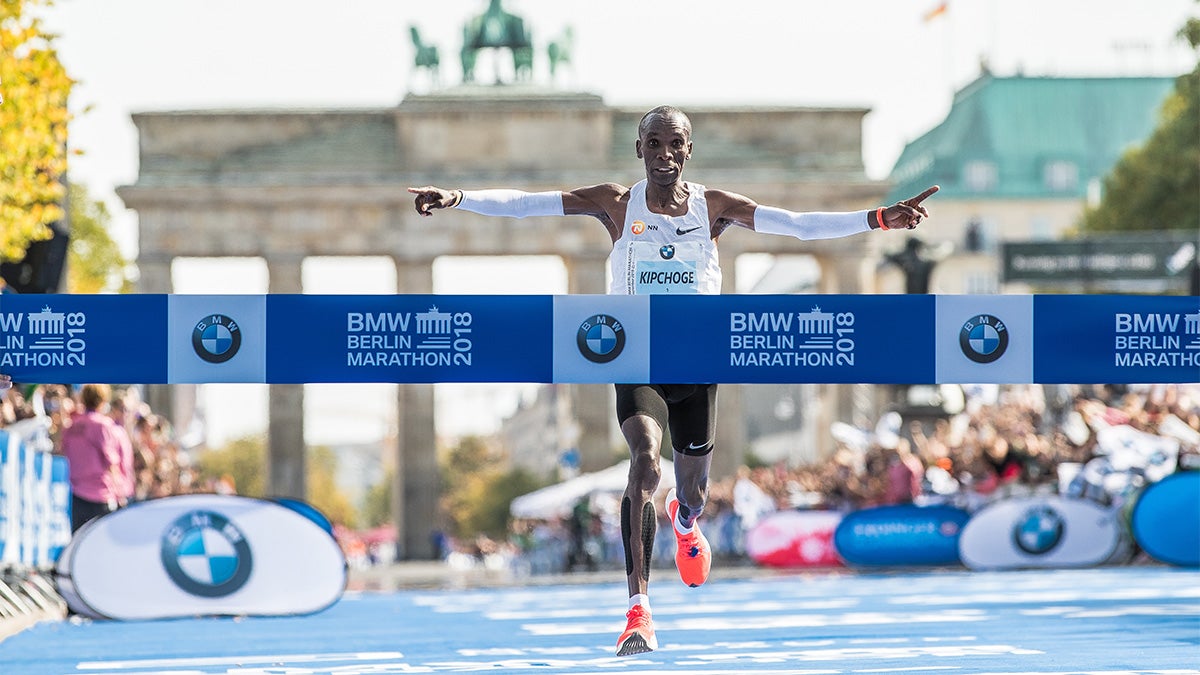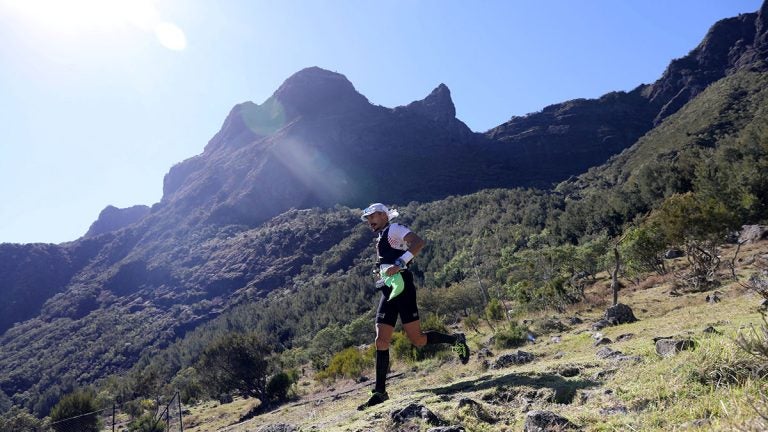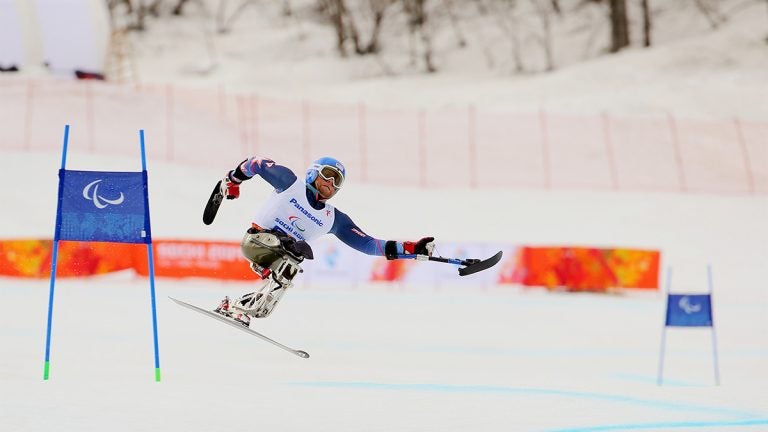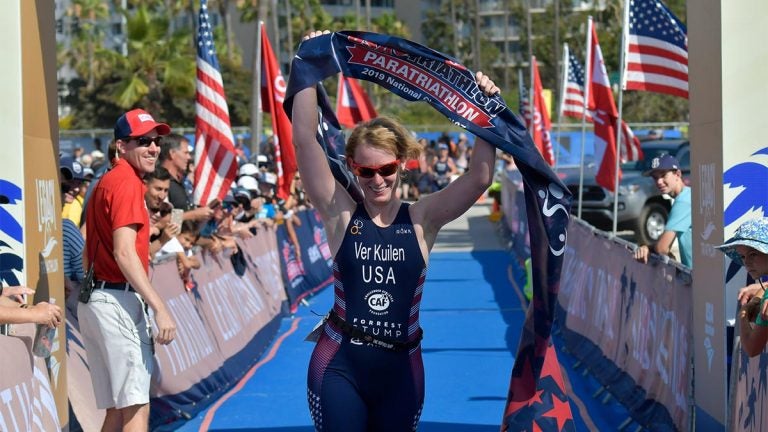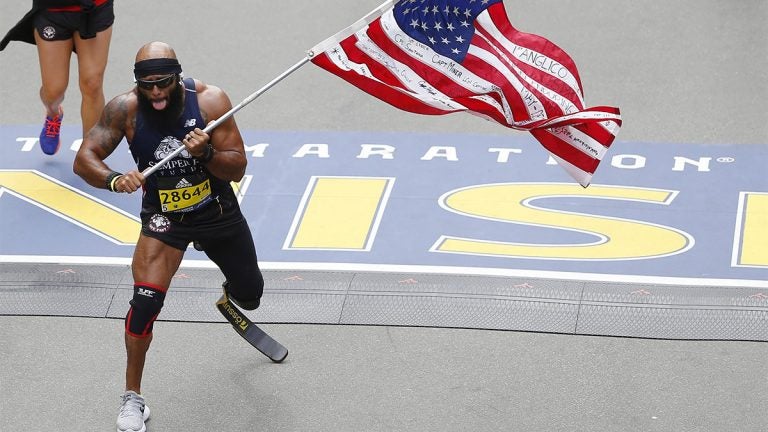Opinion: How do we celebrate Kipchoge but turn blind eye to Semenya, para athletes?
Why this matters
We need to look at how we treat other, biologically "different" athletes in competition.
A thought experiment: Two athletes perform at the top of their games. They both break records. They both make us reconsider preconceived limits. They both compete with grace, strength, commitment and with never-before-seen talent.

One athlete performs in manufactured conditions, with every detail accounted for to optimize performance. The other performs in competition with no extra outside support.
The athlete who is aided by technology receives great acclaim for their success. The athlete who relies on just their own biology is banned from further competition. What gives?
It’s not a thought experiment.
The greatest male distance runner of all time, Eliud Kipchoge, did the unthinkable when he ran a sub-two hour marathon on October 12. It’s so unthinkable that in 2017 when Kipchoge and two other runners first attempted the feat, they narrowly failed. It’s understandable, considering that most mortals could barely run 100 meters at the pace Kipchoge endeavored to hold for 42,000 meters.
To be successful this time required what Kipchoge himself has likened to the team that put the first person (man) on the moon. In runner speak: the organizing committee confirmed the effort just 72 hours in advance after tracking weather patterns; the course was evened ahead of time; dozens of world-class athletes acted as pacers who rotated in a perfected pattern to allow Kipchoge to draft; an electric car projected his required pace at all times; a painted line set forth the most direct path around the park; a cyclist matching Kipchoge’s speed transferred him fluids; and his specialized Nike shoes featured carbon-fiber plates to maximize his energy output.
The manipulation of every aspect means the effort is not an official world record, which is of little consequence given that Kipchoge already holds that mark.
Kipchoge’s success comes more than three months after Caster Semenya ran what may have been her final race. Semenya came blazing onto the international running circuit in 2009 when she captured gold in the 800 meters at the World Championships. Then just 18 years old, her profound success and speculated difference in gender sparked protest from her fellow athletes and made international headlines.
A media circus, humiliating medical tests, leaked private information, scrutiny, and legal action followed Semenya for the subsequent decade. The topic of conversation: Semenya has naturally-occurring testosterone levels that are higher than the average woman. She is also queer, from the global south, and does not adhere to traditional ideals of Westernized femininity. Internet thought pieces and official documents alike are riddled with coded language.
The facts: She is fast, strong and easily outpaces her competitors.
Earlier this year the highest international sports court ruled that track and field’s international governing body can exclude from competition Semenya and other women with naturally-occurring testosterone levels. The rules are “discriminatory but necessary,” according to the court. It’s the sport equivalent of the now infamous “separate but equal” U.S. Supreme Court ruling later struck down. The decision effectively ended Semenya’s running career. Indeed, she did not compete in the most recent World Championships in Doha in October. Instead she is playing soccer.
How are we to reconcile the well-earned international acclaim that Kipchoge has received for his man-made feat with the dehumanizing treatment and blacklisting Semenya was subjected to for racing on her own merits?
Exceptional women are not the only ones who find themselves on the outside of the mainstream sports narrative.
Athletes of all genders who compete in adaptive sports also know this experience all too well. Technological advances — not unlike the shoes Kipchoge wore —are often heralded when used by athletes without disabilities to achieve great feats. But sport feats of para-athletes who use modified equipment to compete are often seen as illegitimate. This, even though “Prosthetics are to the Paralympian what the running shoe is to the Olympian,” as University of Colorado researcher Roger Pielke, Jr. has explained.
“Applying technology to breaking the threshold of a 2-hour marathon would be quite a notable achievement. So, too, would be applying technology to allow amputees to compete fairly in the Olympic games. But only one of these applications represents a more humane use of technology,” wrote Pielke on Kipchoge’s first attempt.
Pielke was in part referring to Oscar Pistorius’s case that came before the same court that heard Semenya’s disputes. At the time, the court ruled that the Blade Runner, as Pistorius had become known, could compete alongside athletes without disabilities at the Olympics. Pistorius became the first double-leg amputee to compete in the Olympic Games when he ran at the 2012 Olympic Games in London.
More recent international sport politics have changed the rules on which Pistorius’s case rested. Subsequently, Markus Rehm, the bladed long jumper poised to take Pistorius’s place in sport, was ineligible to compete at the 2016 Games in Rio.
Pistorius, Rehm, and their fellow para athletes are used to being relegated to the less lucrative, less watched, and less celebrated Games. Despite the Paralympics’ origins as “parallel” to the Olympics, the most coverage the Paralympics has ever received (250 hours) in the US amounted to just 10% of the content aired for the Olympics (2,400 hours).
How are we to reconcile such wide celebration of Kipchoge’s tech-aided accomplishment with the second-class sportsmanship we assign to para-athletes who rely on technological aids or other advanced equipment to make sport accessible?
The answer is in marketing.
“No human is limited” was the official hashtag of the INEOS 1:59 Challenge marathon. Kipchoge famously declared the catchphrase after crossing the finish line. He shared it in media interviews leading up to the moment and has tweeted it more than two dozen times since announcing the effort in May. Ineos, the brand sponsoring the effort, has tweeted it more than 100 times since then.
It’s a good rallying cry. If only it were true.
The moniker is ability and gender neutral. Opting for “human” over “man” and avoiding all ambulatory language – unlike in the moon landing’s “One small step for man, one giant leap for mankind” — Ineos wants all athletes to see themselves in Kipchoge.
Many can’t.
Not when women’s sport is framed as a cost, rather than the investment of which men’s sport is worthy, as sports economist David Berri has researched. Nor when the same is true of para-sports as compared to sport for people without disabilities.
Not with a narrative that merely celebrates women’s participation in sport, rather than revering women for their athletic achievements, as women’s running company CEO Sally Bergesen has written. And when the same is true of para-athletes as compared to athletes without disabilities.
Not with women’s and adaptive sport an after-thought, while men in sport and those without disabilities continue to have opportunities handed to them on a silver platter. Or perfected racing conditions.
Not with Paralympians left out of the stadium’s bright lights.
Not with Semenya on the sidelines, convicted for running in her full humanity.
It’s not Kipchoge’s fault. He ran inspired. His historic accomplishment will no doubt encourage people to dream on and off the track. His message will motivate people to ask, what else is possible?
That’s what I want to find out.
Risa Isard is a Washington, DC-based expert in sports policy, with a focus on the intersection of sports, gender, sexuality, and social issues. She holds a specialized degree in “Social Change at the Intersection of Culture, Gender, and Sports” from Duke University. She's a Phoenix native and has been published on espnW and Quartz. Follow her on Twitter at @RisaLovesSports.

